HANDGEHABT – Our Dialogue in Berlin
A group of Sculpture Network participants met on Saturday afternoon, February 17, 2024, in Berlin-Schoeneberg to jointly visit the exhibition "HANDGEHABT – Werke aus allen Schaffensperioden" featuring the work of sculptor Wolfgang Nestler.
The afternoon was chaired by Sculpture Network coordinator Anemone Vostell, together with collection expert Jana Noritsch and artistic advisor Christel Blömeke. The sculptor Wolfgang Nestler, who lives and works in the Eifel, Düsseldorf, and Berlin, gave insights into his artistic work, his life, and his creative endeavours as part of the retrospective exhibition. Art historian Dr. Roland Scotti (Arbon, CH) curated works spanning more than six decades for the Berlin exhibition in both rooms.
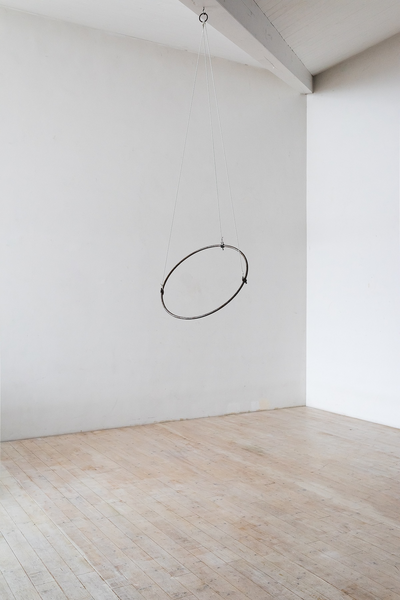
Shortly after the artist was introduced to the participants, a lively discourse began, which was later continued in Wolfgang Nestler's studio in Schoeneberg. A little like in the spirit of Beuys' "social sculpture", an inspiring exchange took place during which some works were presented or set into motion by participants. Afterwards, everyone gathered in the Kunstraum Krüger to chat over tea and cake, where everyone had the opportunity to introduce themselves and a current project. The four hours planned for the visit just flew by.
As if invisible, individual spaces form around each of Wolfgang Nestler's works, which encourage action – not only encouraging visitors to come closer but also to enter into a joint movement with the object. All works in the exhibition correspond unobtrusively with each other and with the visitors as a whole.
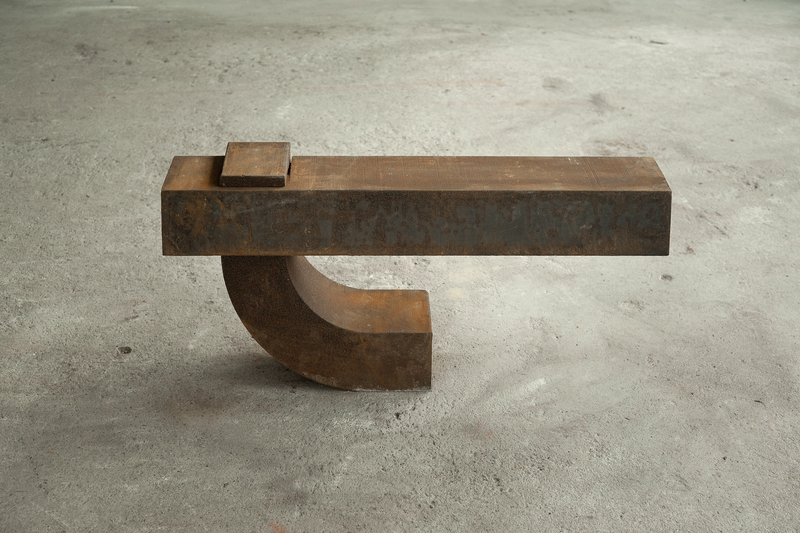
Wolfgang Nestler is a sculptor who "sets off" together with the material each time anew in the working process, without wanting to conquer it but rather to allow it the freedom to let something happen to it. With his courage and his joy in the moulded material, he succeeds in giving the material free rein, even hoping for the unforeseen and remaining in the position of the explorer himself. There is no predefined concept that the artist seeks to realise. From 1967 to 1973, Wolfgang Nestler studied at the Staatliche Kunstakademie Düsseldorf; he was a master student of Erwin Heerich. At the same time, he trained as a blacksmith.
On entering the Kunstraum Krüger, the first thing we catch sight of is the object Ein gesperrtes Siegestor (A locked victory gate), dated 1975. The steel on the threaded rods spans the 34 wooden cubes accurately and securely, and yet we realise that if someone were to loosen a screw, everything would suddenly look completely different. If we turn our attention further to the right into the room, we encounter the work o. T. (without title) from 1971: seventeen adjustable steel rods on a rope. The final shapes of the variable sculptures shown in the exhibition were, in many cases, decided by the curator.
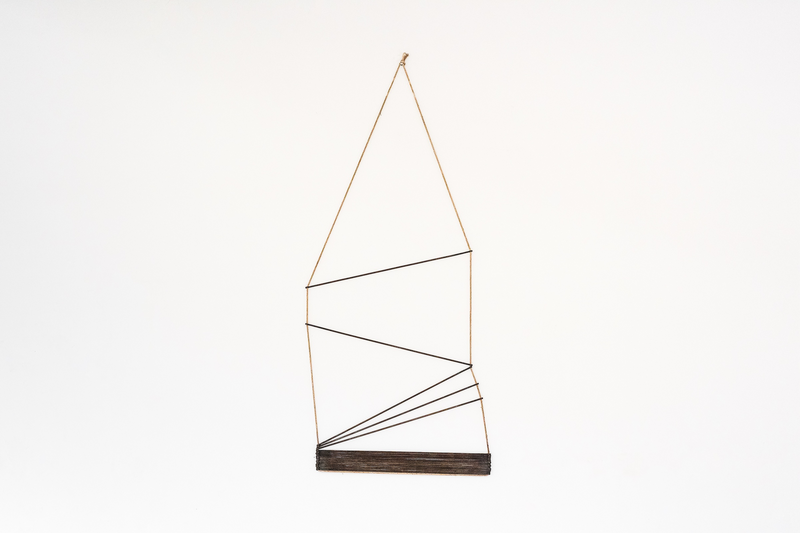
"The sculptures happen; they are a system," [„Tätige Form“ Film by Gabi Heleen Bollinger 2018, 1:03 min] the artist emphasised almost sixty years ago at the beginning of his career. The sculptures are mostly moveable and, in their mobility, agility, or movement, open up their own space of opportunity for coming into action. Or to express it in the words of the artist: "Form is experienced here as a form that evolves and as a form that has an effect." [ibid.] The earliest works on display in this exhibition space include the unfired clay vase (Werkverzeichnis (WVZ) 004/599, 1968) and a work made of spring steel, which looks like a "lasso" in its perforated steel frame (o. T., WVZ 169/174, 1978). The cast steel in polystyrene (o. T. WVZ 224/483, 1981) fascinates with its lightness, as does the Bewegliche Dreieck (Moveable Triangle, WVZ 522/575, 2015). Anemone Vostell directs the conversation to a much more massive flame-cut work made of steel (o. T., 161/387, 1983).
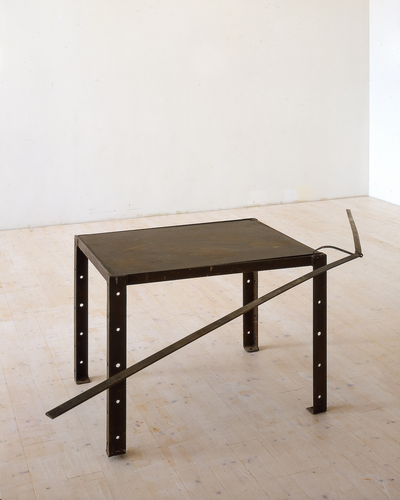
In the sculptor's studio:
With a participant, Nestler approaches the table that the swallow beholds, a work consisting of a work table, a hook, and a steel-forged balancing pole. He picks up the rod, and they both talk to the group about how his original idea for the work was realised. As he places the curved tip on the table, Wolfgang Nestler murmurs, "Here the air that a bird has under its wings can be felt." The visitors were also impressed by the mentally tense Taster (014/473, 1969). And the actually tense steel rod o. T. (361/393, 2000-2004), which seems to wind its way between the four buttons attached to the wall. In this second exhibition room of HANDGEHABT, there is a screen with film material, as touching the sculptures is prohibited for safety reasons. Visitors can see here how the objects appear in moving or in altered form.
What sometimes seems to be light in Nestler's oeuvre and which simply is always given enough "air" is in reality hard work: "And it's not any easier today than it used to be, because everything is so demanding. There is no single part of an object that I am not involved in. There's an idea, and then comes the process of forging. And then my original idea disappears and becomes something completely new! Every time I am in these situations full of tension, I wonder: What happens now? Again and again, there are these new moments in which a form wants to emerge. Situations in which I almost disintegrate – and let go. Because I know: it flows, like water, it can't be stopped. It always rises and wants to go somewhere – into a form that it wants to find itself in. So you need your whole body and mind, also to dare to make mistakes. The matter must be resolved; there will be a way. But a way that I don't know anything about beforehand." This also corresponds with the title of Nestler's catalogue raisonné Kraft, die niemand fürchtet / Tätige Form / Plastiken 1967 – 2017 (A force that nobody fears / Acting Form / Sculptures 1967–2017).
An intense creative process in which the form itself becomes active and, on completion, issues an invitation to participate, provoking a random array or a new shape. The exhibition title and the exhibition HANDMADE contain all of this. Everyone was impressed by it and by the personality of the sculptor, which greatly inspired the subsequent round of talks.
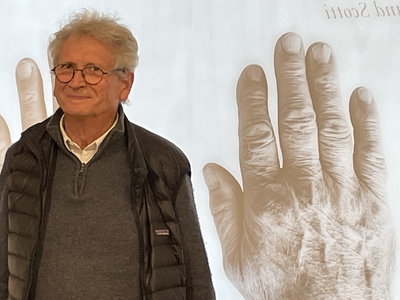
Duration of the exhibition: 12 October 2023 till 12 June 2024 (extended)
Venues: Kunstraum Krüger Berlin, Hohenstaufenstraße 67, 10781 Berlin-Schoeneberg, and in the Wolfgang Nestler studio, curated by Dr. Roland Scotti.
Opening hours of the exhibition
Tuesday, Wednesday, and Thursday, 5pm - 8pm, and by appointment via bloemeke@kunstraum-krueger-berlin.com or by telephone at +49 157 740 186 12.
Wolfgang Nestler was born in Gershausen, Hesse, in 1943 and grew up in the Ruhr region. From 1967 to 1973, he studied at the State Academy of Art in Düsseldorf under Professor Erwin Heerich (master student).
His most important exhibitions include (selection): 2019 ZKM Karlsruhe, Negativer Raum; 2018 Galerie Wack, Kaiserslautern; 2017 Institut für aktuelle Kunst, Saarlouis; 2009 Sophies Inseln, Hommage à Sophie Taeuber-Arp, Kunsthalle Ziegelhütte, Appenzell; 2006 Was ist Plastik? 100 Jahre-100 Köpfe. Das Jahrhundert moderner Skulptur, Wilhelm Lehmbruck Museum, Duisburg; 1993 Stahlplastik in Deutschland, Moritzburg, Halle; 1987 documenta; 1985 Deutsche Kunst nach 1945, Nationalgalerie Berlin; 1977 documenta 6; 1974 Haus Lange, Krefeld.
Nestler's works are represented in public collections throughout Germany, including the Nationalgalerie Berlin, the Lenbachhaus Munich, the Wilhelm Lehmbruck Museum Duisburg, the Von der Heydt-Museum Wuppertal, the Kunstmuseum Düsseldorf, the Staatsgalerie Stuttgart, the Landesmuseum Mainz, and the ZKM Karlsruhe. Further information can be found at www.wolfgang-nestler.de.
Text: Jana Noritsch
German - English





